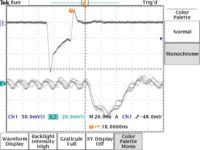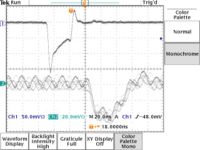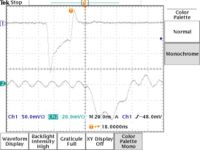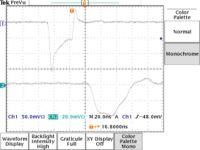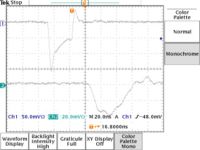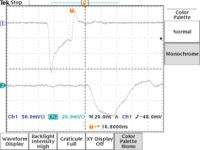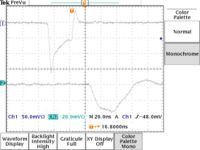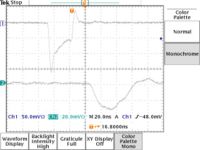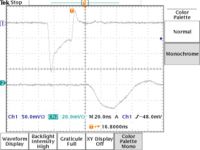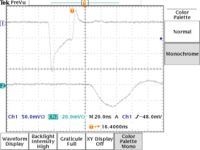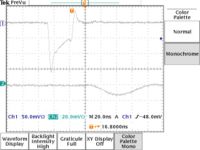Difference between revisions of "Metalica TestPulseoutput 12-20-07"
| Line 7: | Line 7: | ||
The voltage was changed<br> | The voltage was changed<br> | ||
| − | = | + | =PreAmp Voltage= |
| + | |||
| + | We observed the ouput of a test pule injected into the preamp for several preamp voltage setting. The top (purple) trace is the injected pulse and the bottom (torquoise) trace is the output from the POSTamp. | ||
| + | |||
| + | |||
[[Image:metalica_160mv_input-postamp_out_3.7v.jpg|200px]]<br> | [[Image:metalica_160mv_input-postamp_out_3.7v.jpg|200px]]<br> | ||
[[Image:metalica_160mv_input-postamp_out_5v.jpg|200px]]<br> | [[Image:metalica_160mv_input-postamp_out_5v.jpg|200px]]<br> | ||
Revision as of 17:04, 21 December 2007
Tamuna and I test the DC preamp + postamp output using a pulse generator to create a 40 mV levelpulse that was 10 ns wide in order to simulate a pulse from the drift chamber proto-type.
This time we used Metalica but the results are not so different.
The bottom line appears to be that we get a x4 attenuation and not a net amplification deispite our efforts the change the configuration for the better. We also note that channels 1-11 of the postamp proto type attenuate by a factor of four but channels 12-16 have a signal independent of the input.
The voltage was changed
PreAmp Voltage
We observed the ouput of a test pule injected into the preamp for several preamp voltage setting. The top (purple) trace is the injected pulse and the bottom (torquoise) trace is the output from the POSTamp.
